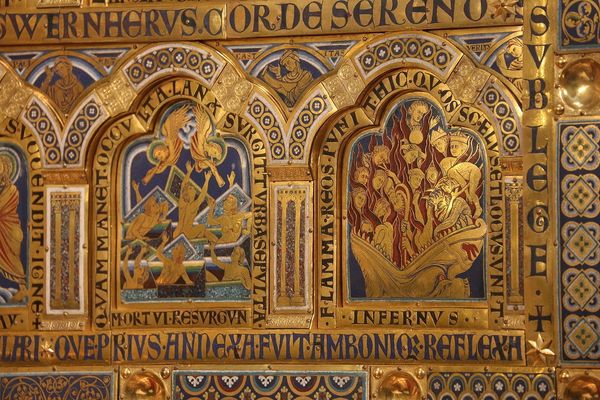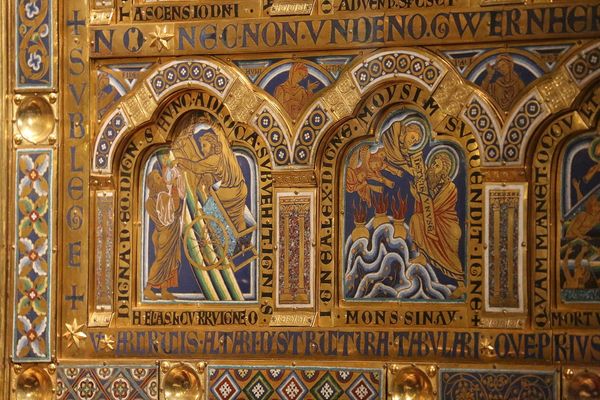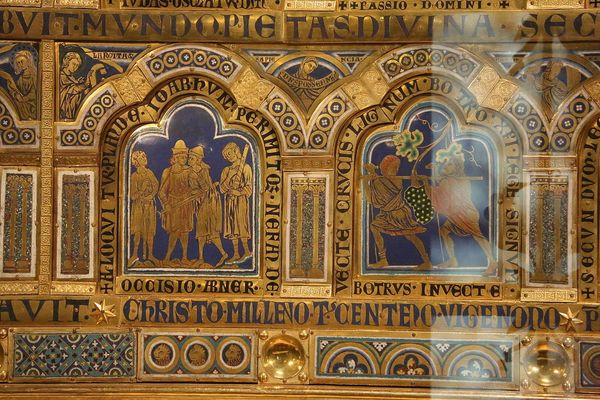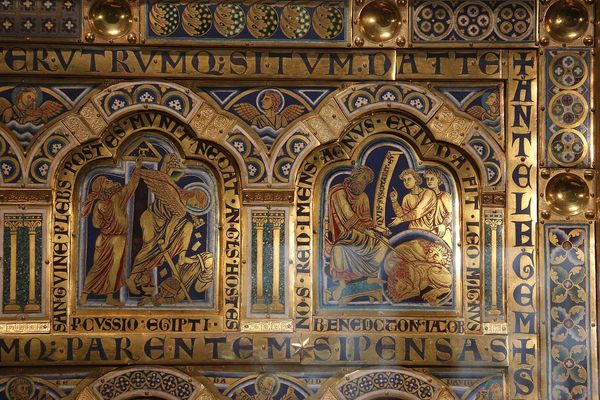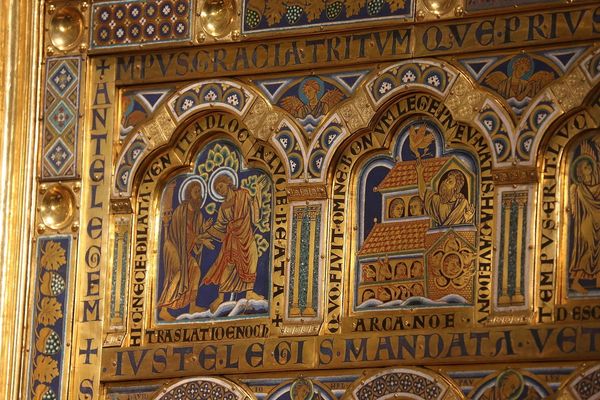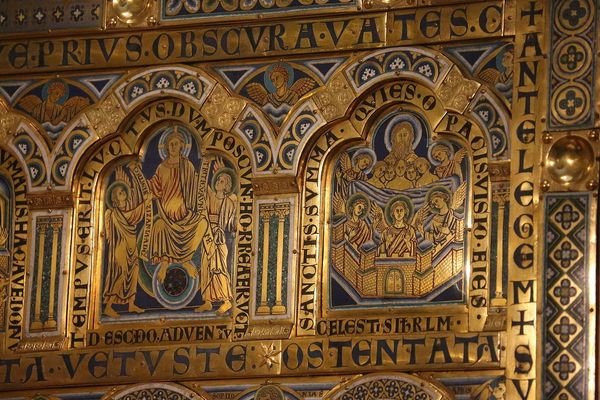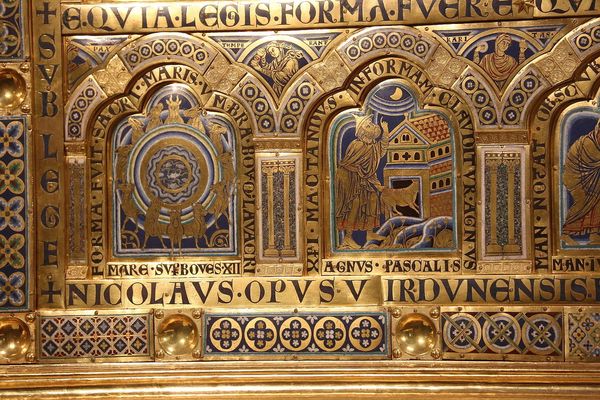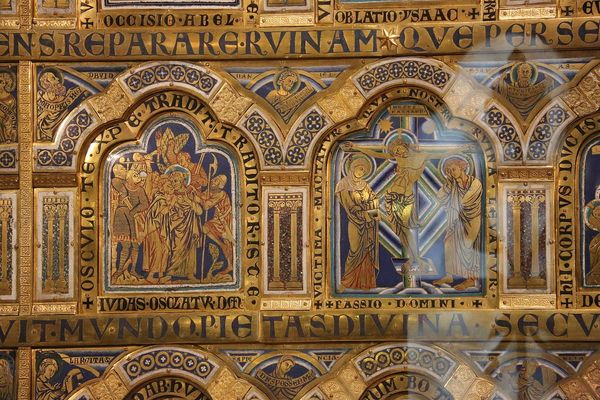
carving, tempera, painting, relief, sculpture
#
byzantine-art
#
medieval
#
carving
#
tempera
#
painting
#
sculpture
#
relief
#
holy-places
#
historic architecture
#
sculpture
#
history-painting
Copyright: Public domain
Curator: This is a detail of the Klosterneuburg Altar, created in 1181 by Nicholas of Verdun. It combines painting and relief carving in a style that reflects both Byzantine and medieval aesthetics. Editor: My initial impression is of a surface brimming with theological tension. There's a graphic novel-like quality in the organization, framed as narratives in contained arched compartments. The bold gold juxtaposed against that deep azure generates immediate visual and emotional intrigue. Curator: Precisely. Consider how the rigid linearity of the panel divisions enhances the overall narrative structure. The gilded surfaces serve not merely as embellishment, but as light reflectors that vivify the figural compositions. The linear, almost diagrammatic drapery, imbues the figures with a dynamic sense of form. Editor: Yet the choice of scenes depicting narratives like Jonah being swallowed by the whale and Samson wrestling the lion resonate far beyond pure aesthetics. We're confronting assertions of divine power over nature. The narratives embody existential human struggles that transcend medieval beliefs; a pointed visual language to underscore sociopolitical constructs and control. Curator: Note the use of repetitive, geometric patterns – circular motifs that function structurally to create balance. We can parse how each symbolic deployment operates within a formalized theological grammar. Editor: I appreciate that formal language, of course, but find myself questioning: what class of viewer did it seek to mobilize? Surely this altar served to reassert social order, reflecting an era punctuated by class hierarchy and political conflicts made visible via carefully orchestrated imagery? Curator: A fitting and well-informed sociopolitical note on which to close. Editor: Indeed, art, like all language, contains and directs power in intriguing ways.
Comments
No comments
Be the first to comment and join the conversation on the ultimate creative platform.

